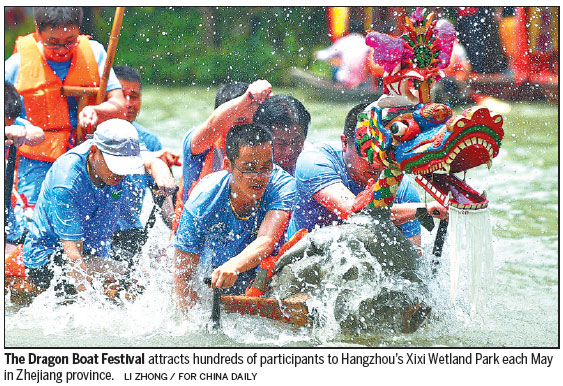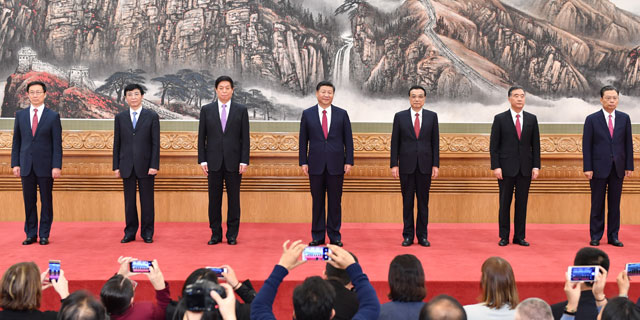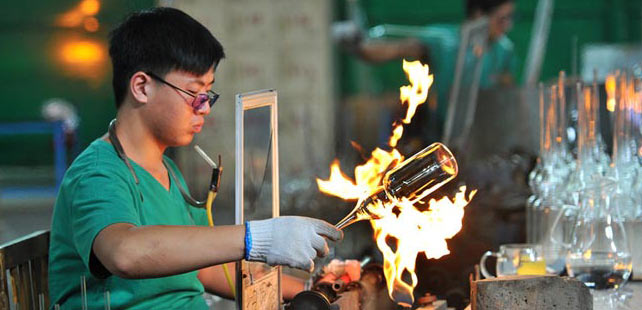An ongoing exercise in excellence
Government providing impetus for a fitter society
Editor's note: This is the third in a China Daily series examining the progress of national sports reform over the past five years.
Despite a biting breeze, runners at north Beijing's Olympic Forest Park were soaked with sweat and beaming with vigor as they jostled for position on a recent Saturday afternoon.
A legacy of the 2008 Olympics, the park features a 10km plastic track that has become a focal point for running enthusiasts since the nation shifted its sporting focus from winning medals to promoting mass fitness in the post-Games era.
"It has become part of my weekend routine; if I miss my running session on Saturday morning for something else, I feel uncomfortable all day," said Lin Kunyi, an amateur marathoner who has been a regular at the park since 2013.
The running craze in Beijing underlines the country's ever-increasing fascination with fitness, inspired by the central government's call to stimulate mass participation in exercise while boosting the sports industry as China aims to build a fitter society by 2030.
President Xi Jinping, in his holistic report at the opening session of the Communist Party of China's 19th National Congress on Oct 18, urged the country's athletic sector to extensively promote mass fitness activities and accelerate development of a strong sporting nation.
Thanks to more accessible facilities, the proportion of Chinese who exercise at least three times a week with medium intensity rose to 33.9 percent of the national population by the end of 2015 - an increase of 5.7 percentage points from 2007, according to the latest national fitness survey released by the General Administration of Sport of China in early 2016.
By the end of 2015, the government had built 573,580 exercise stations for free use, encompassing more than half of the country's cities and villages, and had trained nearly 2 million community sports instructors.
Gou Zhongwen, minister of the GASC, said sport's role in the country's journey to build a moderately prosperous society in all respects by 2020 should be further emphasized.
"The administration will call up sports authorities, organizations and relevant units at all levels to carry out the mass fitness campaign to the next level as a national strategy to improve the health of the people and to build a stronger nation," Gou told China Sports Daily recently.
Mass promotion and the development of the sports industry will be given the same priority as developing medal-winning athletes at international events, Gou added.
Official backing
In a country where Olympic medals used to be the only gauge of sports achievement, the increasing emphasis on mass wellness and participation, highlighted by governmental guidelines, signifies a monumental shift, said observers.
In October 2014, the State Council, China Cabinet, issued a national development plan for the sports sector, urging the governing body to loosen its grip on the untapped market and allow private enterprises to get involved in organizing and marketing of mass sports events.
Before the plan was issued, all sporting events had to be approved by the GASC, which charged event organizers administration fees. That taxed their enthusiasm to help expand events at grassroots level.
"The consistent attention paid by the country's top leaders to the health and wellbeing of the general public has prompted sports authorities and enterprises to shift their focus as well. Participation now matters more than winning medals," said He Wenyi, a researcher at Peking University's Institute of Sports Science.
The free or low-cost availability of sports venues for the general public, funded by central finance, has played a significant role in making exercise accessible. As a tribute to the opening day of the 2008 Beijing Olympics, Aug 8 has been designated National Fitness Day, with all public sports facilities and State-run training venues open on that day to the public for free.
In 2015, the central government granted subsidies of 870 million yuan ($131 million) to 1,212 sports venues around the country to ensure they maintain free or low-cost accessibility.
Lin Leping, a square-dancing devotee in her 60s, said the opening of a nearby school playground on weekends has reduced tension between her dancing squad and community residents over the use of public land.
"We now have a safe, designated place to practice. No more conflicts, and our team has attracted more and more participants to work out regularly," Lin said.


















